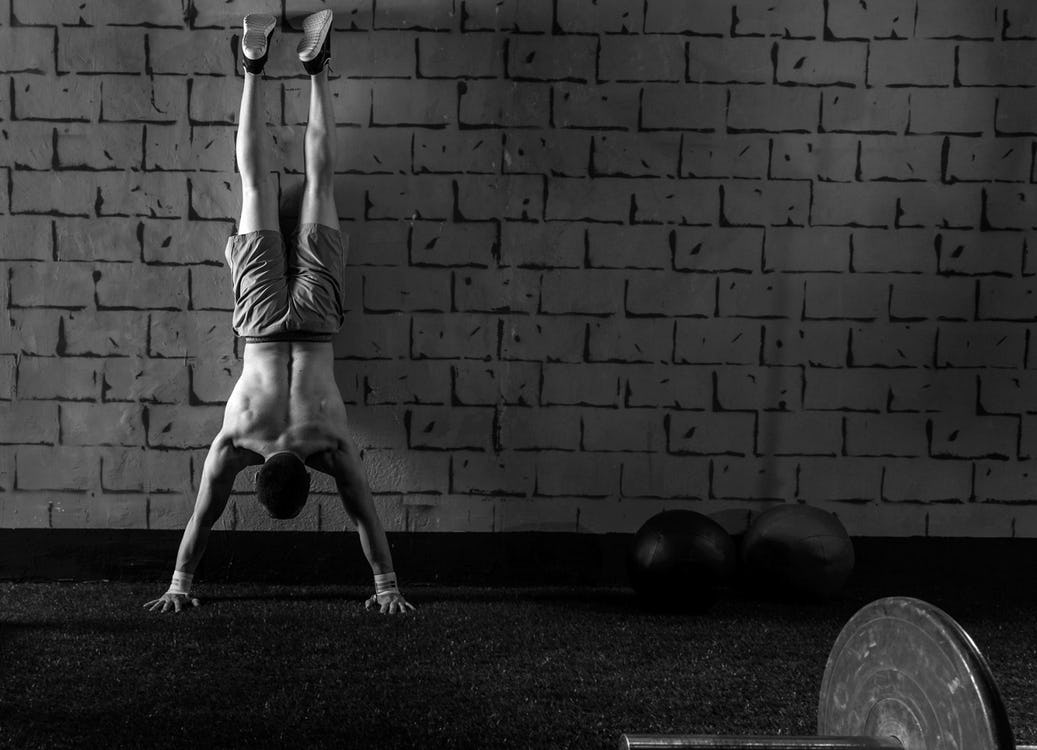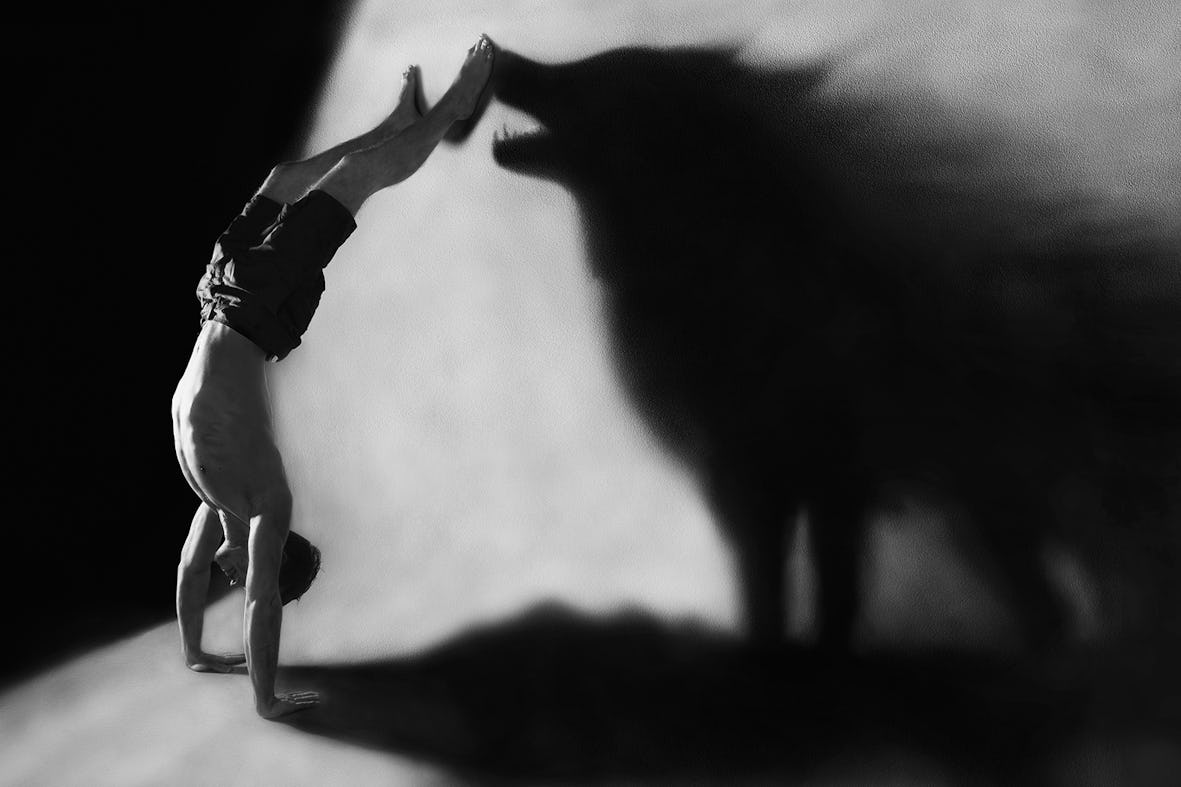I was incredibly weak when I was growing up.
My brother, who was a star football player in high school, got me to sign up to play freshman year. The summer before that started, he began training me.
It’s sad to say but on that first day I couldn’t even do a regular pushup.
Within a few days I was able to achieve that goal, but I was still far from strong. I struggled with bench press for a long time before I could even handle a real plate on each side of the bar.
And sadly, throughout all of high school, I didn’t see a whole lot of progress, so I stuck around there for some time.
A couple of years later I witnessed a friend of mine doing handstand pushups. Wow! I wanted to be able to do those.
So I tried. And I failed. I’d like to say I had some control on the way down, as I fought gravity, but the bump on my head said otherwise.
But I stuck at it. I did handstand holds. I did partials. I worked with isometrics.
In a few months’ time, I was able to do my first handstand pushup.
And that wasn’t the end. I kept at it doing more reps. I realized just how small tweaks in form could make this same exercise much harder or easier. And I added range of motion.
Years later, I was cranking out full range handstand pushups with ease.
Want to know my tricks? Then keep reading…
Even if you’re not trying to do handstand pushups,
It’s All About Progression
When it comes to body weight exercises, it’s all about changing leverage and the amount of your body weight you handle. This is the key to progress.
It’s not as simple as adding a plate or taking away one from the bar. And although you can certainly manipulate reps and sets, you still need to understand the ideas of progression to really go far in any bodyweight exercise.
Sadly, few people really understand this concept.
In my story above, I hinted at some of the ideas. But let me spell out this idea in simple to understand progressive exercises here.
How to Work Up to Your First Handstand Pushup
This is all about taking more of your body weight onto your two hands. With a handstand pushup, you’re lifting your full body weight, however much that may be. For many, starting there is just too much. So where do you start? Wherever you’re at.
1. Kneeling Pushups
This is where I had to start long ago when my brother started training me. Here you’re only lifting about 30% of your body weight.
2. Decline Pushups
The span from kneeling to regular pushups is a pretty big gap. The decline pushup, where your hands are on a raised platform, helps you cross that gap. Depending on the decline, you’ll be working about 40% of your body weight.
3. Regular Pushups
Everyone knows these, though I can’t say everyone’s form is always the best. But that’s a topic for another time. You handle roughly 55% of your body weight when doing regular pushups.
4. Incline Pushups
Just like the decline, except here you raise your feet up on the platform, while your hands are on the floor. I recommend you start with your feet high enough so that your body is parallel to the floor. You’ll be handling around 65% of your body weight.
5. Steep Incline Pushups
These are the same as the last exercise except that you raise your feet up much higher. Make it so that your body is around a 45 degree angle to the floor when starting. Instead of your feet being on some sort of platform, you can even have them just on a wall, though that makes it tougher. Here you’re working about 70-80% of your body weight and you’re almost there.
6. Handstand Pushups
Do enough steep incline pushups and you’ll be able to handle the handstand pushup for at least one rep. You’re handling pretty much your full body weight (technically it’s a little closer to 90-95% though that can depend on a couple of factors like lean).
For each of these exercises, just keep working at a given point until you’re doing sets of about 10-15 reps. At that point you will certainly be able to move up to the next jump in progression.
And if you’re finding it difficult even then, you can also manipulate the angles and leverage to make smaller micro-jumps.
Handstand Pushup Modifications to Make It Easy or Hard
Just because you’re now doing handstand pushups doesn’t mean the job is done.
Here’s a slightly more advanced tip.
How wide you place your hands affects how hard the handstand pushups are because it alters range of motion as well as leverage.
Having your hands outside of shoulder width (unless you go too wide) is going to make them easier.
Making your hands right at shoulder width is tougher.
And if you’re a true handstand monster you can try doing diamond or hand on hand handstand pushups which are insanely difficult.
Going Beyond…
The regular handstand pushup is sometimes called a headstand pushup, because it’s only a partial movement. You touch your head to the ground then go back up.
For full range work of the arms and shoulders, your hands must be raised so that your head can dip between them. Basically, you get to where your hands touch your shoulders and that makes a full range handstand pushup.
So once you’re cranking out the handstand pushups to your head, it’s a matter of raising your hands up so that your head can dip between them, thus increasing your range of motion.
The key to this is to do them over several steps, not just a big jump, and soon enough you’ll be able to do full-range handstand pushups.
Even if you put your hands on chairs, you can place something like a stack of phonebooks under your head to increase the distance little by little.
You now have a roadmap to go from handstand zero to handstand hero. If you put in the work, over time, and know that it can take several years depending on where you’re starting at, you can do it.
If I could, anyone can!




)





